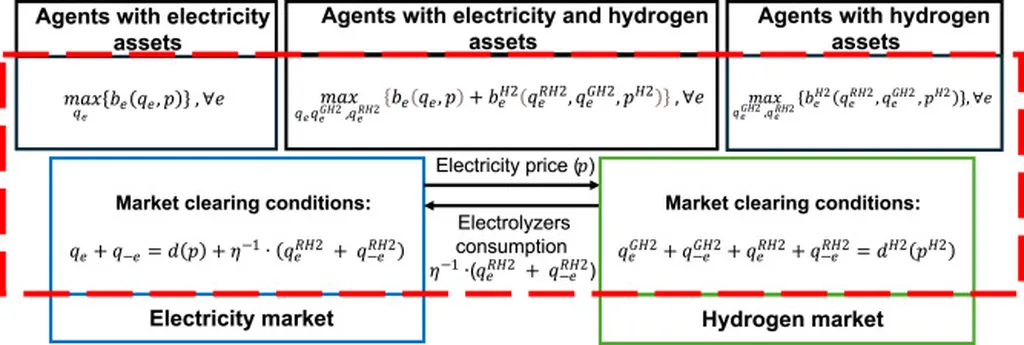In a groundbreaking study published in the *International Journal of Energy Systems and Applications*, researchers have unveiled a novel approach to modeling the intricate dance between electricity and hydrogen markets, offering a fresh perspective on how these energy vectors can synergize for a decarbonized future. The research, led by Luis Jesús Fernández of the Institute for Research in Technology at Comillas Pontifical University in Madrid, introduces a bi-level optimization model that challenges conventional assumptions and could reshape how we understand the interplay between these two critical markets.
The study, titled “Interactions between electricity and hydrogen markets: A bi-level equilibrium approach,” addresses a pressing need in the energy sector: the development of tools that accurately represent the interactions between electricity and hydrogen markets. As energy systems increasingly rely on the synergistic operations of these markets to pursue decarbonization goals, understanding these dynamics becomes paramount.
Fernández and his team have developed a model that positions hydrogen generators as strategic electricity price makers in the power market. This is a significant departure from traditional models that often assume hydrogen generators are price takers. The model is reformulated as a Mixed Integer Linear Program, making it efficient and applicable to real-world scenarios.
The researchers conducted case studies to analyze spot market behaviors when hydrogen generators are modeled as price makers. Single-period simulations revealed the effects of price-making, while a year-long simulation assessed broader implications. The findings were striking. Conventional modeling assumptions, such as price-taker hydrogen generators in the electricity market and constant production cost hypotheses, were found to lead to non-optimal hydrogen generation strategies. These assumptions can raise electricity prices while reducing the profit of hydrogen generators and the overall social welfare of the hydrogen market.
“Our findings highlight the need for models that accurately reflect the interdependencies between these two energy markets,” Fernández explained. “By doing so, we can optimize hydrogen generation strategies, leading to more efficient and cost-effective energy systems.”
The implications of this research are far-reaching. For the energy sector, it underscores the importance of accurate modeling in shaping market behaviors and outcomes. It also opens the door to more sophisticated tools that can better capture the complexities of energy markets, ultimately driving more informed decision-making and policy development.
As the world moves towards a more sustainable energy future, the interplay between electricity and hydrogen markets will be crucial. This research provides a significant step forward in understanding and optimizing these interactions, paving the way for more efficient and effective energy systems. The study was published in the *International Journal of Energy Systems and Applications*, a testament to its rigor and relevance in the field.
In an era where decarbonization is a global imperative, Fernández’s work offers a compelling narrative of how advanced modeling can illuminate the path forward. It’s a reminder that the future of energy lies not just in the technologies we develop, but in the models we use to understand and optimize their interactions.

